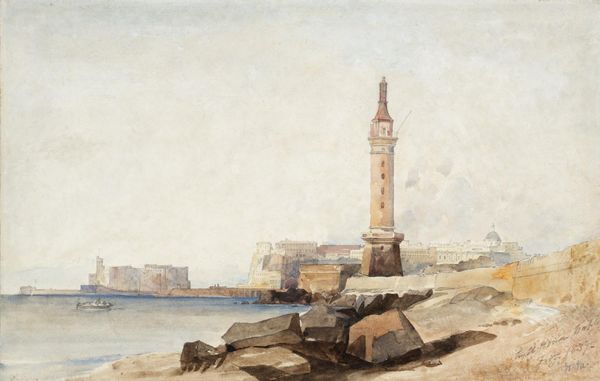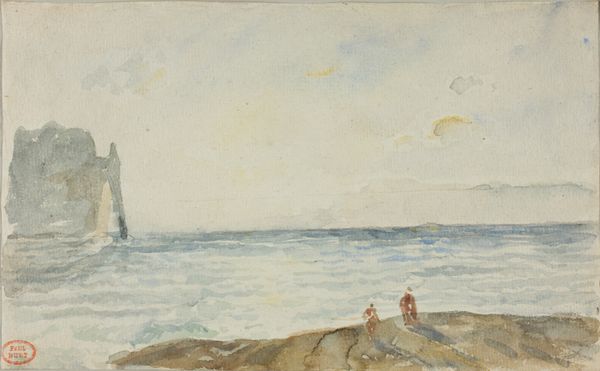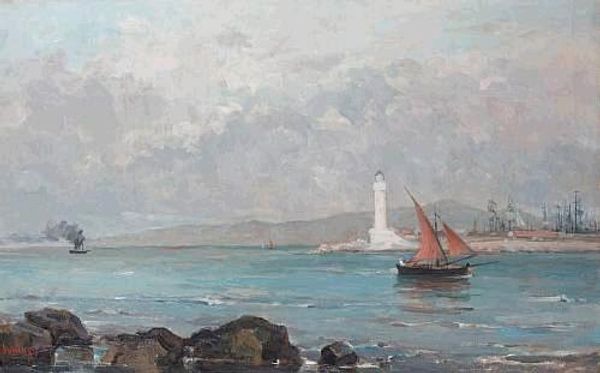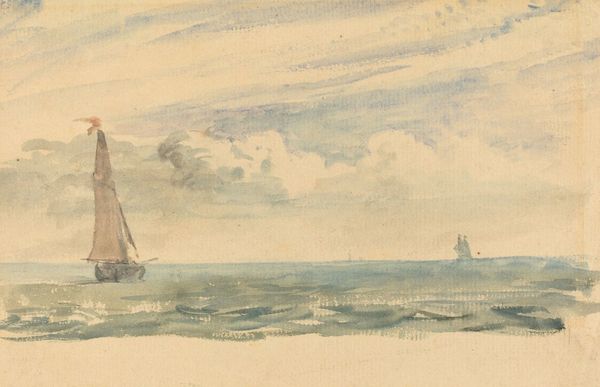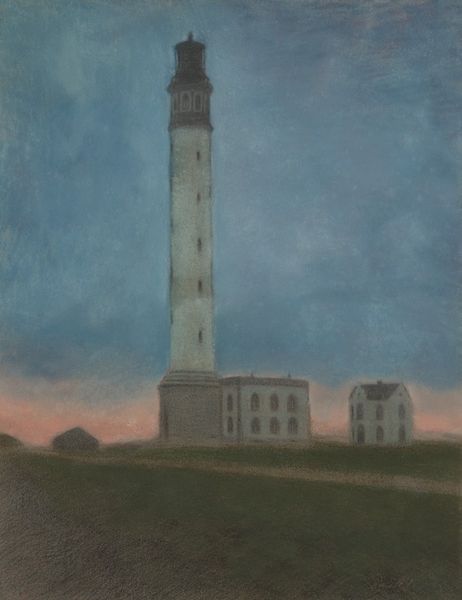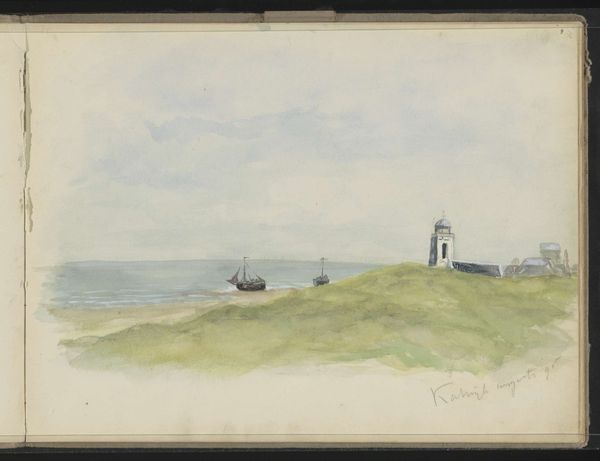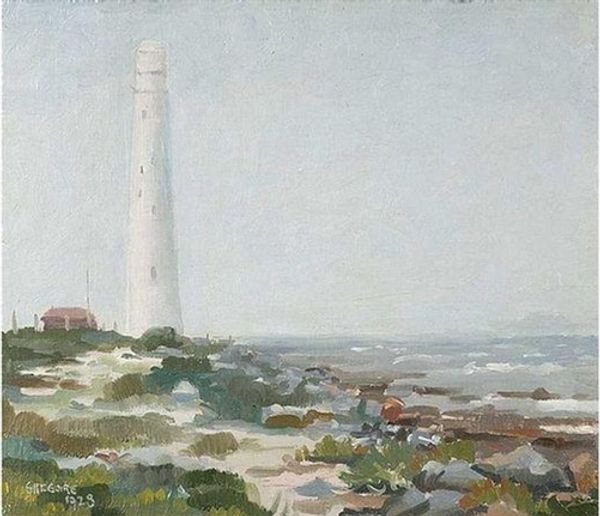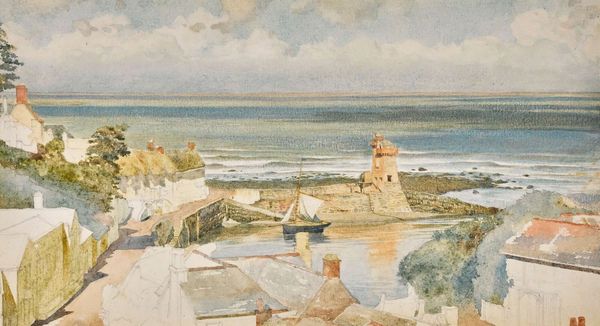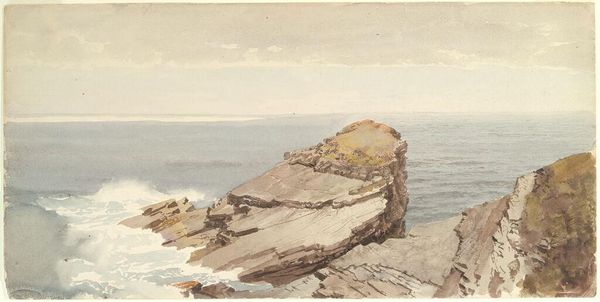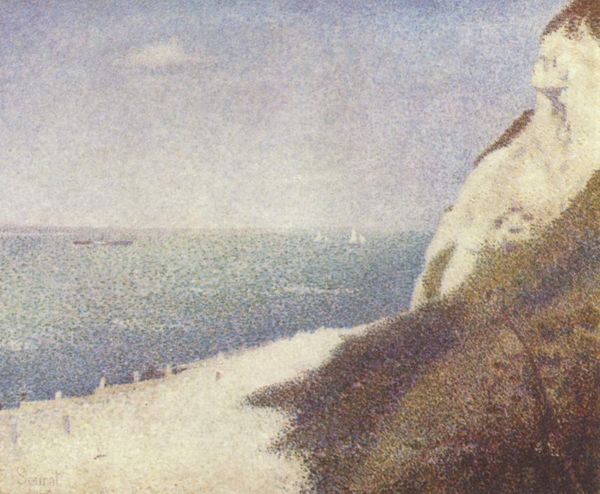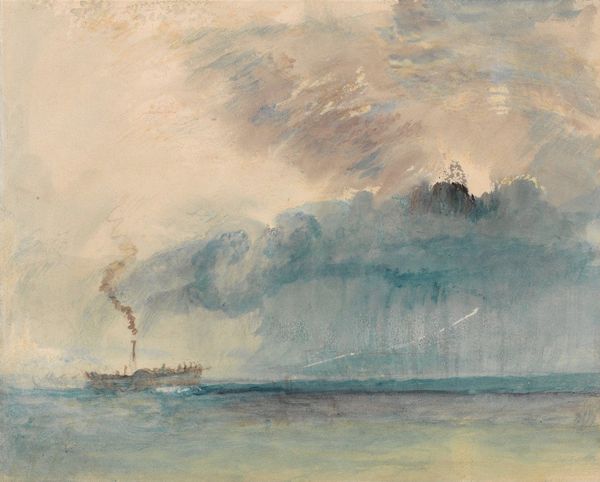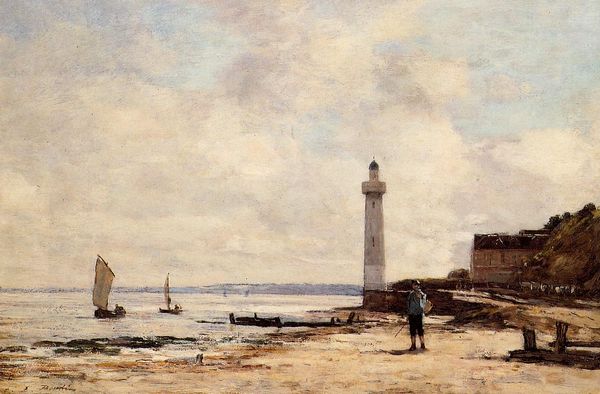
painting, plein-air, watercolor
#
painting
#
impressionism
#
plein-air
#
landscape
#
watercolor
#
cityscape
#
modernism
Copyright: Public Domain: Artvee
Curator: This watercolor by Childe Hassam, painted in 1886, depicts the lighthouse at the Isle of Shoals. It’s a delicate rendering, isn’t it? Editor: Delicate, yes, but it also evokes a stark loneliness. That pale light against the sky gives it a melancholic feel. The tower rising so starkly emphasizes human vulnerability. Curator: That melancholic feel resonates with the social conditions of the late 19th century, as rural life diminished and urban industrialization gained momentum, painting a certain picture of hope against harsh realities. The Isle of Shoals became an important location for Hassam to embrace plein-air painting as an attempt to highlight that vulnerability. Editor: So the Isle of Shoals acted as a respite? Interesting given that lighthouse imagery has such a longstanding and potent symbolic resonance, marking boundaries, guidance through darkness. It connects directly with our human desire for structure. This one especially rises above and overlooks this raw and open space, it almost resembles power and safety. Curator: Precisely, Hassam was conscious of that history and by using watercolor, a lighter and fluid medium, to challenge that common symbolism in art. This choice mirrors a shifting perspective, presenting these traditionally solid, powerful figures through a transient lens. It asks us to rethink fixed symbols. Editor: The Impressionistic style further breaks those rigid notions. The blending washes create atmospheric light, so different from the solid geometries typically associated with such structures. I’m left pondering not just a building, but an impression of isolation at the edges of land and sea, the very intersection where society meets nature’s might. Curator: Absolutely. Hassam uses impressionistic transience not as a goal, but as a means to show the shift in our collective psychology at the time. What was once seen as a symbol of safety and structure begins to mirror human vulnerability in the face of the infinite sea, thus evoking feelings of longing, questioning, and temporality. Editor: And it continues to question them today. The beauty of his method reveals that cultural symbols will continue to evolve, they mirror us. Curator: Very well said. Indeed a fitting meditation to bring to the present moment.
Comments
No comments
Be the first to comment and join the conversation on the ultimate creative platform.
